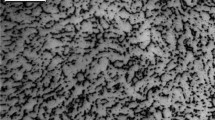Abstract
Hot formability of 359/SiC/20p was investigated in temperature and strain rate ranges from 375 to 500°C and from 0.003 to 10 s-1, respectively. Flow stress and ductility were studied as a function of deforming conditions. A microstructural damage analysis showed that, at higher strain rates and lower temperatures, stress concentrations at the matrix-particle interfaces strongly affect the cavitation process: stresses become large enough that the interface can separate or particles can crack. Conversely, when temperature increases and strain rate decreases, diffusional processes and grain boundary sliding become the preferential mechanisms for void nucleation and growth. A damage criterion is proposed, based on both FEM simulations and ductility data. The criterion results in very good agreement with the experimental damage measurements performed on an H-section component forged under similar conditions. The criterion was used in the optimisation of forging conditions.
Similar content being viewed by others
References
‘Aluminum-Matrix Composites’, in I. R. Davis (ed.), ASM Speciality Handbook Aluminum and Aluminum Alloys, ASM International, Metals Park, OH, 1993, pp. 160–179.
Lloyd, D. J., ‘Particulate Reinforced Aluminium and Magnesium Matrix Composites’, Int. Materials Reviews 39, 1994, 1–23.
Tuler, F. R. and Klimowicz, T. F. ‘Deformation Processing of Alumina-Aluminum Metal Matrix Composites’, in R. B. Bhagat et al. (eds), Metal & Ceramic Matrix Composites: Processing, Modeling & Mechanical Behaviour, The Minerals, Metals & Materials Society, 1990, pp. 271–280.
De Sanctis, A. M., Evangelista, E., Forcellese, A. and Fuganti, A., ‘Forging of a MMC for an Automotive Application’, in Proceedings of the Int. Conf. on ‘Materials for Lean Weight Vehicles’, Warwick, U.K., 27–28 November, 1995, pp. 73–82.
Pickens, J. R., Langan, T. J., England, R. O. and Liebson, M., ‘A Study of the Hot Working Behaviour of SiC/Al Alloy Composites and Their Matrix Alloys by Hot Torsion Testing’, Metall. Trans. 18A, 1987, 303–312.
Evangelista, E., Forcellese, A. and Gabrielli, F., ‘Hot Working Bahaviour of Whisker-Reinforced SiC/Al Composite’, in M. H. Loretto and C. J. Beevers (eds), Proceedings of the Int. Conf. on ‘Processing, Properties, and Applications of Metallic and Ceramics Materials’, Birmingham, U.K., September 7–10, 1992, pp. 245–250.
Alunni, A., Evangelista, E., Forcellese, A. and Cerri, E., ‘Temperature and Strain Rate Effects on Hot Formability of 6061+ 20 vol.% SiC Whiskers’, in T. Chandra and A. K. Dhingra (eds), Proceedings of the Int Conf. on ‘Advanced Composite Materials’, The Minerals, Metal & Materials Society, Wollongong, Australia, February 15–19, 1993, pp. 1079–1085.
Razaghian, A., Yu, D. and Chandra, T., ‘Deformation Behaviour of SiC Particulate Reinforced 7075 Al Alloy at High Temperatures’, Ref. 7, 1993, pp. 1067–1071.
McQueen, H. J., Sakaris, P. and Bowles, J., ‘Hot Ductility and Strength of SiCp/A356 Al Composite and Matrix Alloy by Torsion Testing’, Ref. 7, 1993, pp. 1193–1198.
Xia, X., Sakaris, P. and McQueen, H. J., ‘Hot Deformation, Dynamic Recovery and Recrystallisation Behaviour of Aluminium 6061-SiCp Composite’, Mat. Sci. Technol. 10, 1994, 487–496.
Syu, D.-G. C. and Ghosh, A. K., ‘Forging Limits for an Aluminum Matrix Composite: Part I. Experimental Results’, Metall. Trans. 25A, 1994, 1994–2027.
Xia, X., McQueen, H. J. and Sakaris, P., ‘Hot Deformation Mechanisms in a 10 vol.% Al2O3 Particle Reinforced 6061 Al Matrix Composite’, Scripta Met. 32, 1995, 1185–1190.
Syu, D.-G. C. and Ghosh, A. K., ‘The Effect of Temperature on the Fracture Mechanism in 2014Al/15 vol.% Al2O3 Composite’, Mat. Sci. Eng. A184, 1994, 27–35.
Ashby, M. F., Gandhi, C. and Taplin, D. M. R., ‘Fracture-Mechanism Maps and Their Construction for F.C.C. Metals and Alloys (Overview No. 3)’, Acta Metall. 27, 1979, 699–729.
Raj, R., ‘Development of a Processing Map for Use in Warm-Forming and Hot-Forming Processes’, Metall. Trans. 12A, 1981, 1089–1097.
Humphreys, F. J., ‘Deformation and Annealing Mechanisms in Discontinuously Reinforced Metal-Matrix Composites’, in S. I. Andersen et al. (eds), Proceedings of the 9th Risø Int. Symp. on ‘Metallurgy and Material Science’, Roskilde, Dk, 1988, pp. 51–74.
Roberts, S. M., Withers, P. J., Barnes, S. J. and Prangnell, P., ‘Forging of H-section from Aluminium Metal Matrix Composite Bars, Modelled Using the Finite Element Method’, J. Mat. Proc. Technol. 45, 1994, 421–428.
Roberts, S. M., Withers, P. J., Barnes, S. J. and Prangnell, P., ‘Use of the Finite Element Method to Numerically Model Forging Trials Performed on Aluminium Metal Matrix Composite Materials’, in S. I. Andersen et al. (eds), Proceedings of the 15th Risø Int. Symp. on ‘Material Science’, Roskilde, Dk, 1994, pp. 505–510.
Withers, P. J., Roberts, S. M. and Kusiak, J., ‘Computer Aided Design of Forged Metal Matrix Composite Component Microstructures’, in Proceedings of the 4th Int. Conf. ‘Computed Aided Design of Advanced Materials and Technology’, Tomsk, Russia, September 1995.
Humphreys, F. J. and Kalu, P. N., ‘Dislocation-Particle Interactions During High Temperature Deformation of Two-Phase Aluminium Alloys’, Acta Metall. 35, 1987, 2815–2829.
Fields, D. S. and Backofen, W. A., ‘Determination of Strain Hardening Characteristics by Torsion Testing’, Proc. ASTM 57, 1957, 1259–1272.
Sellars, C. M. and Tegart, W. J. McG., ‘Hot Workability’, Int. Metall. Reviews 17, 1972, 1–24.
Evangelista, E., Forcellese, A., Gabrielli, F. and Mengucci, P., ‘Hot Workability of Some Heat Treatable Aluminium Alloys’, in T. G. Langdom et al. (eds), Hot Deformation of Aluminium Alloys, The Minerals, Metals & Materials Society, 1991, pp. 121–139.
Forcellese, A., ‘A High Temperature Constitutive Equation for AA 2014 PM Alloy and Its Application to Isothermal Forging’, Int. J. Mat. & Product Technol. 10, 1995, 1–15.
Barnes, S. J., Prangnell, P. B. and Humphreys, F. J., ‘Microstructural Characterisation of As-Received, Deformed and Forged Al Composites’, Final Report of Brite-Euram Project‘Forging of MMCs for Automotive Components’, Manchester Materials Science Centre, UMIST, 1995.
Author information
Authors and Affiliations
Rights and permissions
About this article
Cite this article
De Sanctis, A.M., Evangelista, E., Forcellese, A. et al. Hot formability studies on 359/SiC/20p and their application in forging optimisation. Appl Compos Mater 3, 179–198 (1996). https://doi.org/10.1007/BF00135055
Received:
Accepted:
Issue Date:
DOI: https://doi.org/10.1007/BF00135055




